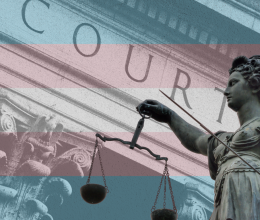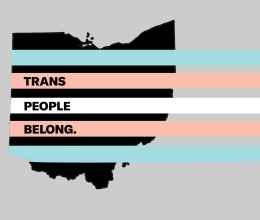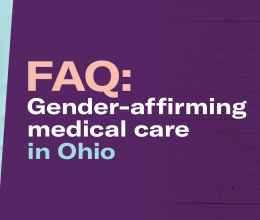“Love is love” was the refrain we heard last year as gay marriage became legal in the United States. Unfortunately, love is not protected in fair housing.
LGBTQ Renters in Cuyahoga County Face Persistent Discrimination
In the majority of states in the U.S., sexual orientation and gender identity are not protected classes, meaning housing providers can discriminate against individuals who are anything other than cisgender and heterosexual. A recent study published by Housing Research & Advocacy Center analyzed the prevalence of housing discrimination on the bases of sexual orientation and gender identity in Cuyahoga County. It was no surprise that discrimination because of sexual orientation or gender identity was found in more than 34% of all rental audits conducted during this study. People of color also experienced higher rates of such discrimination. The differential treatment manifested as landlords providing less information and/or inferior service to LGBTQ home seekers. The result is unequal housing opportunity.
A recent study by Housing Research & Advocacy Center found discrimination because of sexual orientation or gender identity in more than 34% of all rental audits.
If, as an LGBTQ person, I repeatedly get fewer calls back, delayed responses to my housing inquiry, or am only shown the crappy units, or am told “I don’t rent to lesbians,” I have been denied access to housing. My choices have been limited, and my dignity has been harmed. I have missed an opportunity to live in my neighborhood and home of choice. My search is prolonged, likely costing me more money and additional stress. I may have to settle for something less than ideal, because who I choose to love. How I identify in terms of gender is affecting where I get to live. Discrimination places people at a severe disadvantage in something as basic and fundamental as housing. This is not fair.
Local Ordinances Don’t Provide Enough Protection
Fair housing laws were enacted to undo the harmful effects of segregation and to promote residential integration. The federal Fair Housing Act of 1968 protected people on the bases of race, color, national origin, and religion, and later added through amendments sex, familial status and disability. Currently, 22 states protect residents from sexual orientation discrimination. Only 19 include protections on the basis of gender identity. Ohio is not among them.
In Cuyahoga County, 15 municipalities ban discrimination based on sexual orientation and 11 prohibit gender identity discrimination. However, in the Housing Center study, discrimination was just as prevalent in protected cities as non-protected cities. Without inclusive protections and greater enforcement, we are denying people their civil right to fair housing and failing to live up to the fair housing mandate.
So That All Is Fair In Love And Housing
In 2016, we should be eliminating barriers to housing and increasing opportunities for everyone.
The U.S. Department of Housing and Urban Development (HUD) issued guidance in 2012 that prohibits discrimination in HUD-funded housing on the bases of sexual orientation and gender identity, as well as marital status. This extends to private landlords who purchase rental property through an FHA-backed loan. Recently, HUD has begun to investigate sexual orientation and gender identity complaints as sex-based discrimination, in that people are being discriminated against due to non-conformity to sex-role stereotypes.
This new interpretation of the law is a step in the right direction. However, a more important step would be to amend the Fair Housing Act to explicitly include sexual orientation and gender identity protections, so that all is fair in love and housing.
Darlene N. English is the Director of Education and Outreach at Housing Research & Advocacy Center







